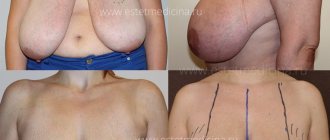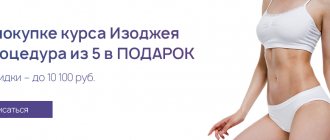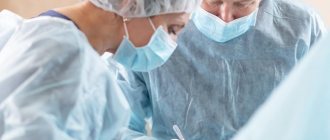Have you ever thought about how a woman feels when she is blessed with slender, beautiful legs? How does she feel when she gracefully walks along the path of life, confident in her own irresistibility? What is it like to know that the exciting curve of your thigh, chiseled shins and sophisticated aristocratic ankles take men’s breath away? For ladies who are forced to painfully think about such questions, a solution has long been invented - cruroplasty.
Modern plastic surgery has accumulated impressive experience in this area. One of the tasks that cruroplasty effectively copes with is the reduction of bulky shins, thick ankles and massive knees. Large calves do not allow you to feel like an elegant gazelle, they interfere with the choice of clothes, for example, you cannot afford skinny jeans, short skirts, and it is difficult to choose boots with a top.
The indication for an operation to reduce the volume of the legs using leg liposuction is the uneven deposition of a large amount of adipose tissue in the front and inner surfaces of the knees, calves, popliteal fossae and ankles.
As a result of the shin reduction legs will acquire a beautiful contour, a refined curve in the popliteal fossa will smoothly transition into elegant calves, and then flow into refined ankles, you will gain confidence in your own irresistibility, which will inevitably give grace and lightness to your gait.
Cruroplasty photo
You can see photos of leg liposuction, as well as a photo report from the operating room, in the Photo Gallery section.
Leg liposuction
Depending on the complexity of the specific situation, a plastic surgeon can perform liposuction of the legs under general (if liposuction of more than 2 zones is necessary) or local (liposuction of up to 2 zones) anesthesia.
In places convenient for the surgeon and invisible to the patient, micro-incisions are made, up to 5 mm long, through which, at the beginning of the operation, infiltration (flooding) is performed - the introduction of a special solution into the adipose tissue, which promotes, firstly, easier separation of fat cells, -secondly, vasoconstriction, which avoids large blood loss and reduces the duration of leg liposuction . The liquid is introduced in a 1:1 ratio to the planned volume of fat to be removed.
After 10 - 15 minutes, through the same micro-incisions, the plastic surgeon inserts a cannula connected by a sterile hose to a vacuum suction (aspirator). The latter maintains a constant high negative pressure. The doctor removes fatty tissue by performing back-and-forth movements of the cannula almost parallel to the skin. At the end of liposuction of the legs, the surgeon sutures the incisions, applies a sterile bandage and puts on compression garments.
How to lose weight in calves? Exercises to reduce calves
The main principles on which a set of exercises to reduce calves should be based are aerobic training, with a high number of repetitions, combined with careful stretching of the legs. There are special exercises for losing weight in the calf muscles, which a trainer at the fitness center will be happy to share with you if you tell him: I want to lose weight in my calves.
If step aerobics and special exercises for losing weight in your calves seem boring to you, try aerobics, yoga or Pilates - these training systems also contain good and effective exercises for reducing calf muscles.
However, no matter what exercises you choose to lose weight in your calves, remember: the reduction of the calf muscles occurs gradually and through great effort. When starting to do exercises to lose weight in your calves, be prepared for the painful sensations that always arise when working out your calf muscles, and for the fact that you will have to do exercises for full calves for months, almost every day, working out in the gym or introducing exercises for your lower legs into your home workouts .
Rehabilitation period after leg liposuction
, the patient is discharged home the next day after leg liposuction However, you need to remember that the recovery process after surgery lasts on average about 1 – 1.5 months. During this time, experts recommend wearing compression garments, avoiding sports and visiting the sauna.
In the first days after shin reduction, you may experience discomfort when walking. Severe swelling and bruising will also be observed, which may persist for 2 to 3 weeks after surgery. Gradually all these unpleasant phenomena will disappear.
The stitches are removed on the 7th day. Small scars will initially be pink and dense, but within 6 to 12 months they will “ripen”, turn pale, become thread-like and completely invisible.
Provided that all the plastic surgeon’s instructions are followed, you can evaluate the effect of leg liposuction , which consists in acquiring a chiseled, graceful contour for the legs, in 1-1.5 months. If a woman leads a healthy lifestyle and does not gain weight, then the results of leg liposuction will last forever.
Scientists from the University of Columbia, with the assistance of paleontologists, have found that the positive reaction of men to beautiful female legs is an unconditioned reflex. It turns out that graceful calves are one of the components of the aesthetic image of an attractive female in the subconscious of the stronger sex. It turns out that liposuction of the legs can be considered an additional opportunity for beautiful ladies to influence the subconscious of men.
If you still have questions after reading the article about cruroplasty , call and make an appointment for a consultation by calling the clinic and 8(921)99-22-335
Cause of calf muscle growth
The problem of full calves can be solved. But to do this you need to understand the root cause of their appearance. The cause of fullness in the calf muscles is directly related to swelling of the muscle cells in the legs. Swelling may accompany your legs from the perinatal (intrauterine) period, or may appear later. At first it is almost invisible and does not cause discomfort. But over time, the movement of lymph in swollen legs slows down, the cells become clogged with waste and greatly increase in size.
Nikolay Nikonov
Imagine an ordinary balloon. As long as it is not inflated, it can be easily stretched in any direction. But once you fill such a ball with liquid or pump it with air, stretching it becomes problematic. Thus, a muscle free from edema can easily stretch. It is mobile and can be influenced by exercises and stretches. A swollen muscle, like a balloon filled with water, becomes inflexible; physical activity causes pain and discomfort in it.
Lymph, compressed by swollen muscle cells, moves even more slowly. The cells swell more and begin to put pressure on the veins and capillaries. As a result, swelling and pain when walking, spider veins are added to the unaesthetic appearance of full calves, and after some time varicose veins appear. In this case, fitness classes and massage are not only useless, but also contraindicated.
Other methods
Some studies, conducted primarily in the Asian region, report successful calf reduction by cutting the branch of the nerve (denervation) of the Musculus Gastrocnemius (3, 7) and obliterating the muscle using high frequencies (4). Subsequently, it remains possible to neutralize the calf muscles with Botox ®.
Calf reduction by denervation or nerve cutting (Wadenverkleinerung durch Denervation = Nervendurchtrennung)
Denervation involves cutting the nerve trunks of the Gastrocnemius muscle. After denervation, the muscle stops developing, which leads to a decrease in volume. This, however, does not compare with the effect of removing Gastrocnemius. When the nerve is cut, a reduction in volume of 1.5-3 cm is achieved. This is due to the fact that despite the reduction, most of the volume of the gastrocnemius muscle remains in place. In addition, the gastrocnemius muscle can also be innervated by separate branches of nerves that do not belong to the usual bundles of nerves in the popliteal fossa. These branches can partially replace the cut nerve trunks, which prevents the expected reduction in muscle volume. Most often, to reduce the calves, the so-called selective neurectomy (denervation) is used, in which only the nerve branch located inside the head of Gastrocnemius is cut. In this case, the branch of the lateral head of the muscle is not dissected for the reason that it is in close proximity to the nerve branch of the M. Soleus. When the latter is denervated, functional complications may occur. Advantages:
- If the nerves are not located in an unusual way, it is a less expensive intervention.
- The postoperative recovery phase is short.
Flaws:
- Due to the possible unusual arrangement of nerves, the outcome is not always predictable.
- If the nerves are unusually positioned, branches of other calf muscles can be damaged, which can lead to limited calf function.
- Overall, significantly less reduction in calves.
- Healthy muscle denervation occurs.
High frequency method
High frequency calf reduction involves obliterating the muscle using electric current and heat through several small punctures in the skin. This process can be performed with varying strengths, but, as a rule, under general anesthesia. Basically, the result is burning of the muscles, which leads to partial necrosis (death of tissue). In this case, however, there is still enough residual tissue so that the effectiveness of calf reduction is less than with the removal of Gastrocnemius. There are fewer and smaller scars on the skin. In addition, one should not forget about internal scarring of the Gastrocnemius muscle. For this reason, the patient needs to perform stretching exercises for the calf muscles for several weeks in order to prevent significant muscle contraction. Also, after calf reduction through high frequencies, you should expect significant swelling, which can last from several weeks to several months. Advantages:
- Small invisible scars on the skin.
- Minor short-term loss of muscle strength.
Flaws:
- Internal muscle scarring.
- Longer period of swelling after calf reduction.
- Less significant effectiveness as M. gastrocnemius remains.
- Healthy muscle tissue is destroyed.
Calf reduction with Botox ® (Wadenverkleinerung mittels Botox ®)
It is also worth mentioning the possibility of calf reduction with Botox ® (Botulinumtoxin A) (8). Botox is a nerve poison that causes muscle paralysis. It is commonly used today in the treatment of fine lines and wrinkles. However, there are other indications, including reduction of calves. Botox ® is injected into the muscle without anesthesia through small punctures (10-15 per side). Advantages:
- This is a non-invasive method and leaves no scars.
- Treatment is easy and does not require surgical skills.
- The recovery phase should not be taken into account.
- If the result does not seem satisfactory, the calf muscles are restored after a few months.
Flaws:
- After repeated use, only a slight reduction in calf volume is achieved.
- The result lasts for only 3-6 months.
- In the long term, this is an expensive method. Application must be repeated every 3-6 months, and the required dose is large due to the size of the muscle.
Endoscopic partial muscle removal
In the Asian region, especially Korea, endoscopic calf reduction is common (2, 6). In this case, it is possible to reduce M. Gastrocnemius through one (for one muscle head) incision or two (for both muscle heads) incisions measuring about 2 cm in the popliteal fossa. This is how partial removal is performed. Thinning of muscle tissue is carried out using an electric knife (a knife that cuts using electric current and high temperature). In this way, the natural shape of the calves is largely preserved. Advantages:
- Small skin incisions
- It is possible to give individual shape to the calves
- Minor short term loss of strength
Flaws:
- Healthy muscle tissue is removed.
- The volume of the calves does not decrease as significantly as with complete removal of the muscle.
- If the cut surface cannot be made smooth, the unevenness of the contour may remain noticeable.
Postoperative treatment (Nachbehandlung): Postoperative treatment after this form of calf reduction is similar to the points mentioned in the previous section. In addition, intense stretching exercises should be performed daily for several months to prevent scar shrinkage.
Rehabilitation goals
A rehabilitation course after operations and injuries allows you to achieve the following results:
- regenerate muscle tissue, restore the previous level of strength and tone;
- restore motor activity of joints impaired after injuries, fractures, surgical interventions, immobilization;
- improve tissue regeneration, incl. cartilaginous;
- increase mobility with adhesions and scars;
- improve the trophism of muscle and bone tissues of the body;
- eliminate swelling and pain;
- improve blood circulation in damaged joints or limbs.
In addition, rehabilitation helps strengthen the patient’s overall tone and improve his emotional and psychological state. The absence of a timely rehabilitation course can lead to complications, re-development of the disease and threatens incomplete restoration of muscle strength.
Rehabilitation after surgery after a biceps muscle tear
A torn biceps muscle (biceps brachii) is most often associated with a sports injury, but this injury can also be caused by strong direct impacts, road accidents, etc. This injury leads to dysfunction of the elbow and shoulder joints and difficulty in free movements in the upper limb.
A biceps tendon rupture can be complete or partial. The difference lies not only in clinical data, but also in the amount of damage.
Patients with complete ruptures complain of intense, persistent pain in the shoulder area; they cannot bend their arm at the elbow joint. Externally, there is a deformation in the forearm area, which is often confused with a fracture. A few hours after the injury, swelling develops.
A ruptured biceps muscle requires surgical treatment to fully restore strength, which is especially necessary for athletes or people whose activities involve physical labor.
The operation is also advisable for people with partial tendon ruptures, if symptoms persist after conservative therapy.
Various surgical techniques are currently used that require minimal incisions and allow the tendon to be repaired. During surgery, the tendon is reattached to the bone. The doctor chooses the option for a specific surgical intervention. This operation is rarely accompanied by the development of complications. Repeated ruptures of the operated biceps muscle occur sporadically.
Rehabilitation after surgery after a biceps muscle tear primarily involves performing therapeutic exercises. To correct the range of motion in the shoulder joint, therapeutic exercises that strengthen the shoulder are prescribed.
Thanks to a successfully performed operation and a well-chosen set of rehabilitation measures, the deformation of the biceps muscle is corrected, its strength and function are restored.
Timely rehabilitation after surgery after a biceps muscle rupture helps prevent the development of serious complications: tendonitis, myositis, which tend to become chronic with debilitating pain during an exacerbation.
Physiotherapy and exercise therapy are highly effective during the rehabilitation period. Specialists at the Yusupov Hospital rehabilitation clinic select an individual program for each patient; the duration of rehabilitation treatment is usually about three months.










